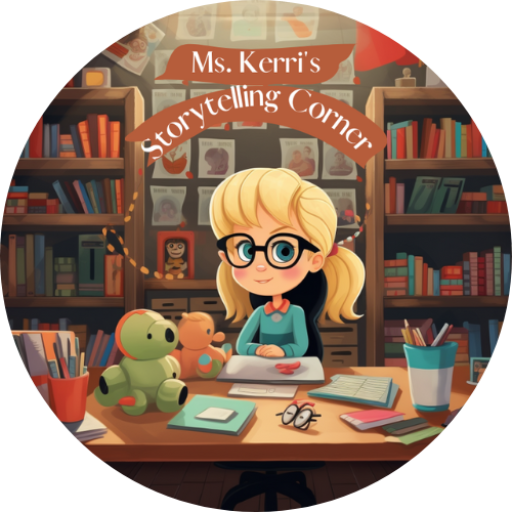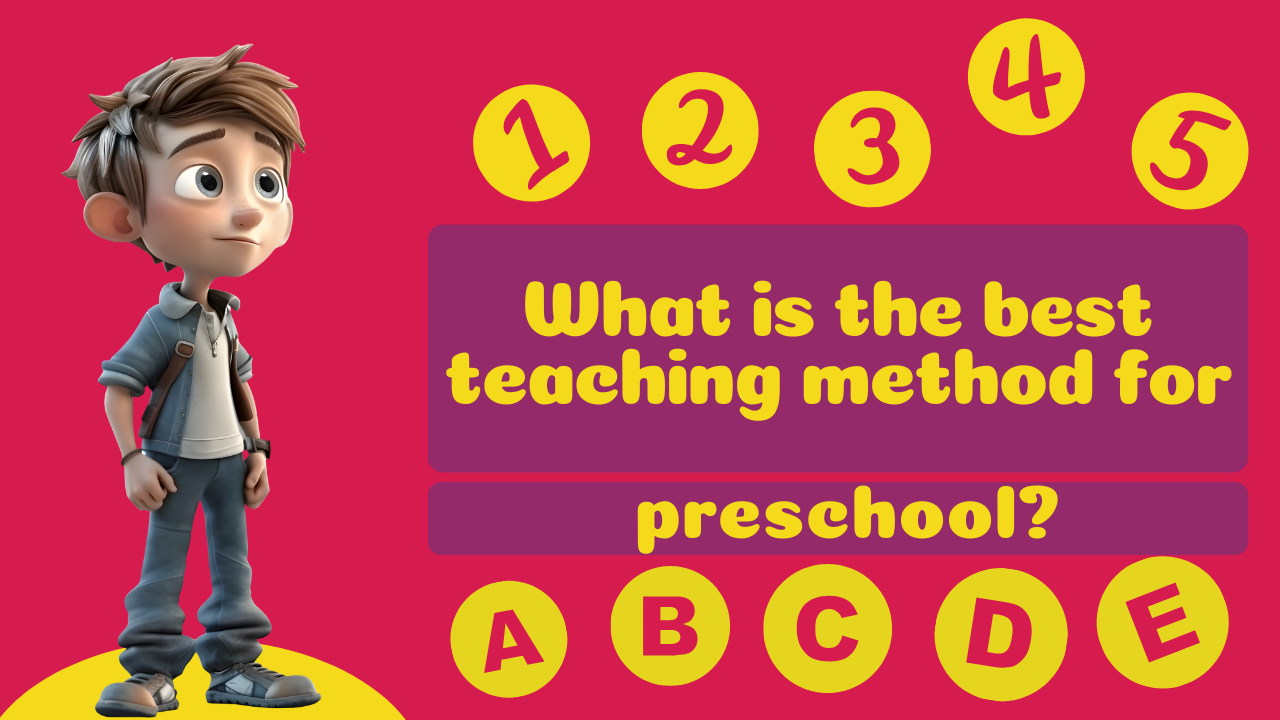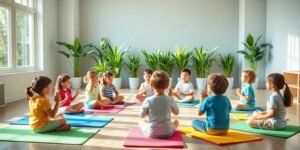What Is The Best Teaching Method For Preschool?
Preschool education is a crucial stage in a child’s development, shaping their future learning experiences. In this article, we explore three key teaching methods that have been proven effective in preschool settings: Play-Based Learning, Storytelling, and Music and Movement. Each method offers unique benefits and opportunities for young learners to engage, explore, and grow.
Key Takeaways
- Play-Based Learning allows children to learn through hands-on experiences and fosters creativity and problem-solving skills.
- Storytelling captivates children’s imagination, enhances language development, and makes learning fun and memorable.
- Music and Movement activities help children develop coordination, rhythm, and social skills while making learning enjoyable.
- Encouraging exploration and curiosity in preschoolers is essential for their cognitive and emotional development.
- Incorporating a variety of teaching methods in preschool education can cater to different learning styles and enhance overall learning outcomes.
The Magic of Play-Based Learning

Let Them Play
Unleash the chaos of creativity and watch as the little tykes turn the room upside down—literally. It’s not a mess; it’s their imagination running wild! Let them build forts from cushions, create epic sagas with action figures, and paint the Mona Lisa on the living room wall (washable paint, please!).
Play is the serious business of preschool, and it’s through this seemingly unstructured chaos that the most profound learning occurs. They’re not just playing; they’re becoming mini-masters of negotiation, problem-solving, and innovation.
- Problem-solving: Building blocks today, cities tomorrow.
- Social skills: Sharing is caring, but sometimes it’s just plain hard.
- Physical development: Climbing, jumping, and running—oh my!
Encourage personalized reading goals with achievable targets for kids, offer incentives like bookmarks and outings for completing challenges, and organize reading events to foster a love for reading in the community.
Remember, every scribble, every ‘oops’, every ‘what’s that?’ moment is a step towards growth. So, let the playdates begin, and may the floors be ever in your favor!
Learning Through Exploration
Discovery is the playground of the young mind, and what better way to fuel that than through exploration? It’s a jungle out there in the world of preschool education, but fear not! Our little adventurers are more than ready to embark on a quest for knowledge.
Curiosity didn’t just kill the cat; it educated it. Let’s set the stage for a treasure hunt where every corner turned is a new lesson learned. From the squish of playdough to the colors of a butterfly’s wings, every sensory experience is a building block in the fortress of their minds.
- Touch, taste, smell, hear, and see
- Question, experiment, fail, and succeed
- Imagine, create, solve, and play
These are the cornerstones of a learning experience that goes beyond the traditional sit-and-get. It’s a hands-on, minds-on approach that makes every day an adventure.

In the realm of the preschool, the brave explorers who dare to venture beyond the familiar are the ones who reap the rewards of a full and vibrant education.
And let’s not forget the hidden treasure in this expedition: the enhancement of reading skills. Who knew that cursive writing and Christmas carols could be secret maps to literacy? Benefits include improved handwriting, cognitive skills, memory, vocabulary, comprehension, and phonemic awareness. Vital for academic success and personal growth, these are the spoils of the journey through exploration.
Creativity Unleashed
Unleash the crayons, and let the paper be a canvas for imagination! In the whirlwind of colors and shapes, preschoolers learn more than just how to stay within the lines. They learn to express, to imagine, and to create worlds beyond our own. Bold ideas start with a single scribble, and in this scribble lies the seed of innovation.
Playtime learning isn’t just fun and games; it’s the cornerstone of creative development. When little hands mold clay or stack blocks, they’re not just playing—they’re engineering their understanding of the world. It’s a messy business, but who said breakthroughs were ever tidy?
- Experiment with textures
- Mix unexpected colors
- Construct, deconstruct, and reconstruct
These are the pillars of a play-based curriculum that champions creativity. And let’s not forget the role of dress-up, where a cardboard box isn’t just a box—it’s a rocket ship, a castle, or even a time machine!
In the kingdom of the young, every creation is a masterpiece, and every game is a lesson in disguise. The transformative world of playtime learning is our guide, unlocking the secrets to child growth and development through the magic of imagination.
The Power of Storytelling
Imagination at Work
Unleash the whimsy! When preschoolers dive into the world of storytelling, they’re not just sitting ducks in a pond of words—they’re vibrant fish exploring the ocean of imagination. Stories are the playgrounds of the mind, where dragons are tamed and little heroes conquer vast kingdoms—all before snack time.
- Encourage role-play to bring stories to life
- Use expressive voices to captivate and amuse
- Introduce a variety of genres to spark diverse adventures
In the realm of make-believe, every tale is a new horizon. Here, children learn not from rote memorization, but from the thrilling escapade of narrative.
Let’s not forget, the power of a good cliffhanger can turn even the wiggliest of worms into attentive bookworms. So, keep those pages turning and watch as tiny imaginations blossom into epic tales of learning and discovery.
Engaging Little Minds
Ever tried to wrangle a herd of preschoolers? It’s like herding cats, but way more giggles and glitter. Storytelling is the secret sauce that turns chaos into captivation. Imagine the scene: little eyes wide, tiny hands gesturing wildly, and a chorus of ‘What happens next?’ filling the air.
- Characters: They’re not just names; they’re new best friends.
- Plots: Twists and turns better than a playground slide.
- Settings: From enchanted forests to the dark side of the moon.
When the story’s climax hits, you could hear a pin drop – that’s the power of a tale well told.
Remember, the goal isn’t just to entertain, but to light a fire in those pint-sized brains. It’s about making connections, sparking curiosity, and watching as those little cogs begin to turn. And if you’re looking for inspiration, Ms. Kerri’s Storytelling Corner is a place where imagination comes to life, a treasure trove for any story-seeking maestro.

Bringing Lessons to Life
Ever watched a child’s eyes light up at the twist in a tale? That’s the power of storytelling, transforming the mundane into the extraordinary. Characters leap off the page, embarking on adventures that teach more than just the ABCs. They teach bravery, kindness, and the art of problem-solving.
- The Brave Little Tailor: Counting giants and outwitting them? Math and strategy!
- The Very Hungry Caterpillar: Days of the week and healthy eating? Check and check!
- Goldilocks and the Three Bears: Exploring sizes and consequences? A big lesson in a small package.
When stories become the playground, every word is a swing, every sentence a slide, and every plot twist a merry-go-round of wonder.
In the realm of the preschool, where fidgets and wiggles are the norm, a well-spun yarn is the secret sauce to a focused huddle of little learners. It’s not just about listening; it’s about living the story, with every sense engaged. The room buzzes with energy as tiny voices chime in, predicting, questioning, connecting. And just like that, a storybook becomes the stealthy teacher of life’s big lessons.
The Joy of Music and Movement

Dance to Learn
Twirl, leap, and hop to the beat! Preschoolers are natural movers, and dance is the perfect outlet for their boundless energy. It’s not just about the giggles and wiggles; dance is a powerhouse of learning potential.
- Coordination: Mastering those funky moves requires serious motor skills.
- Balance: Every pirouette is a lesson in physics, minus the textbook.
- Memory: Remembering steps gives the brain a workout too.
- Teamwork: Group dances are the ultimate ‘together’ activity.
With every beat and rhythm, children are not just dancing; they’re sculpting their brains, bodies, and social skills.
So, let’s crank up the tunes and watch as they discover new ways to express themselves, all while soaking up those juicy educational benefits. Dance isn’t just a method; it’s a preschool revolution!
Singing for Memory
Ever noticed how a preschooler can belt out a nursery rhyme without missing a beat? That’s the power of melody—it’s like a glue that makes words stick in their little noggins. Singing isn’t just a shower concert for tots; it’s a memory-boosting powerhouse.
- Repetition is the name of the game in preschool tunes. It’s the secret sauce that helps kids remember not just the song, but the concepts behind the lyrics.
- Movement often accompanies singing, which means they’re not just learning through their ears but their whole body!
- Emotion—ever seen a kiddo sing with a frown? Nope, because singing is joy, and joy is memorable.
Singing for memory isn’t just about remembering songs; it’s about engraving knowledge in a fun and lasting way.
So next time you hear a chorus of tiny voices singing about numbers, shapes, or the alphabet, know that they’re not just having fun—they’re wiring their brains for future learning triumphs. And isn’t that what preschool education is all about? Laying the foundation for academic success, social development, and cognitive skills that will follow them throughout their lives.
Rhythm and Rhyme
Tap your feet, clap your hands, let’s dive into the rhythmic beats where learning meets fun! Rhyming isn’t just a game, it’s a brain-boosting, memory-enhancing musical ride. It’s all about patterns, sounds, and timing – and preschoolers just can’t get enough of it.
- Why Rhyme?
- Enhances phonemic awareness
- Boosts memory and recall
- Improves listening skills
With a beat in their step and a rhyme on their lips, preschoolers are primed for language development.
It’s not rocket science, it’s better – it’s the art of turning words into a playground. Imagine the giggles and wiggles as little learners find the magic in matching ‘cat’ with ‘hat’, ‘bat’ with ‘rat’. It’s a melody of words, a dance of the tongue, and before you know it, they’re hooked on the sound, the rhythm, the rhyme!
Frequently Asked Questions
What are the benefits of play-based learning for preschoolers?
Play-based learning helps children develop social skills, problem-solving abilities, and creativity in a fun and engaging way.
How can storytelling enhance the learning experience in preschool?
Storytelling sparks imagination, improves language skills, and makes lessons more memorable for young children.
Why is music and movement important in preschool education?
Music and movement activities promote physical coordination, cognitive development, and emotional expression in preschoolers.
How can play-based learning be incorporated into a structured curriculum?
Teachers can integrate play-based activities into lesson plans, allowing children to learn through hands-on experiences while meeting educational goals.
What role do parents play in supporting preschool teaching methods?
Parents can reinforce learning at home, participate in school activities, and communicate with teachers to create a supportive learning environment for their child.
How can teachers assess the effectiveness of teaching methods in preschool?
Teachers can observe children’s engagement, track progress through assessments, and seek feedback from parents to evaluate the impact of teaching methods on learning outcomes.


Ms. Kerri’s Corner provides a exciting virtual space for preschool learning. Through a variety of engaging activities, she exposes young minds to early math, literacy, science and social-emotional skills in a developmentally appropriate way. Centers for blocks, art, books and music allow children to explore hands-on learning at their own pace. Guided lessons subtly introduce number sense, letter sounds and narrative thinking. Careful observation gives insight into each child’s progress across domains. Viewers are also invited to participate, reinforcing that their ideas are valued. By making learning fun yet purposeful, Ms. Kerri lays the groundwork for future academic success while fostering creativity and imagination. Her program offers preschoolers valuable screen-based learning experiences.



